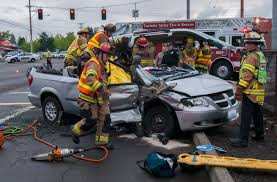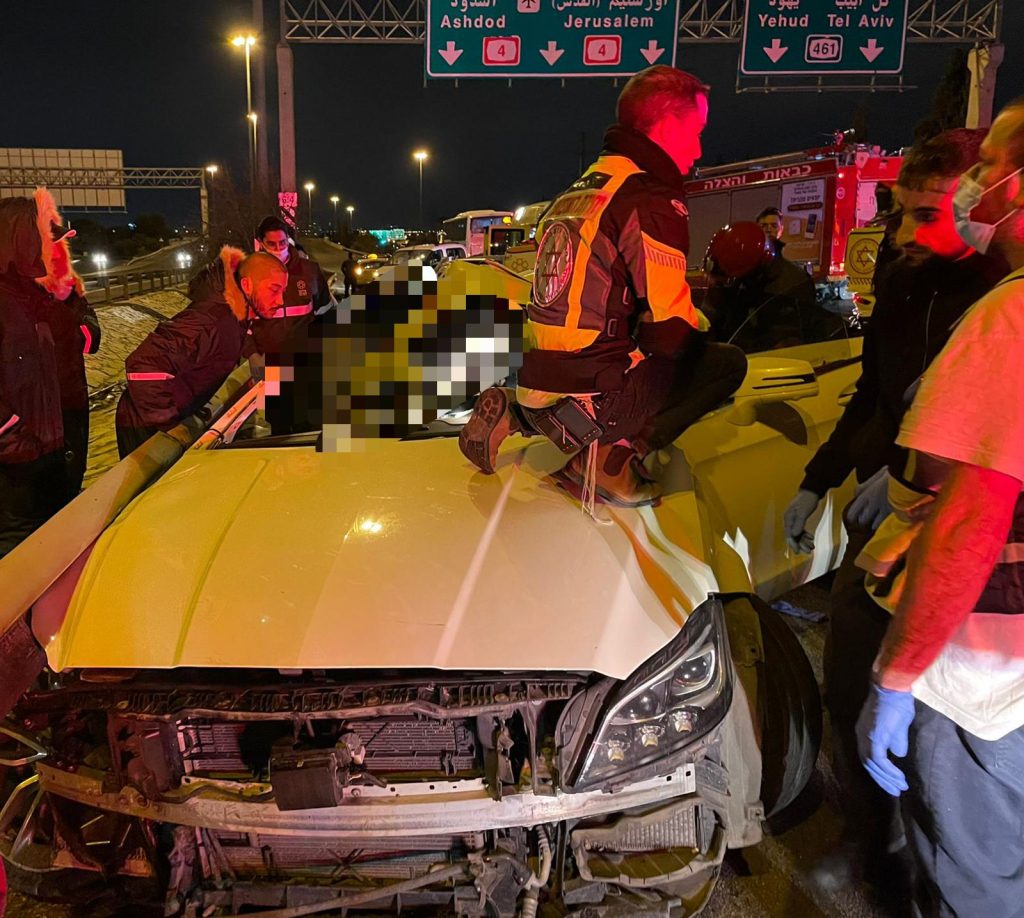Vehicle Extrication
Published .

The goal is to get the patient out of the car
One of the most common EMS calls are motor vehicle collisions (MVC). The patient could be seriously injured or just not. The patient may be able to get out of their car and walk around or not. If the patient is able to get out of their car and walk around, the severity of their injuries are probably (there are cases where serious injuries occurred but the patient is still able to self-extricate and ambulate after the accident, but they are rare) not that severe. The concern is the possibility of a cervical spine fracture. The following mechanisms of injury should increase the index of suspicion for cervical spine fractures:
- The vehicle has sustained significant damage. This can be observed with serious intrusion (damage making the area smaller) to the occupant space (where the patient was seated in the vehicle).
- Rollover accidents – Rollovers are extremely violent mechanisms of injury due to the fact that cars are not designed with safety for passengers when the vehicle is laying on the roof. Seatbelts and airbags are useless in these types of accidents. The injuries sustained happen so fast and are so severe that they baffle explanation.
- Lateral impacts – Lateral impacts are devastating, but primarily to the occupants on the impacted side. For instance, if the vehicle was impacted on the passenger side, the passenger will sustain greater injuries than the driver (the opposite is true for an impact to the drivers side).

Motor vehicle crashes can be dangerous
First things first, where should the ambulance park? The ambulance should park with the accident forming a barrier between oncoming traffic and the ambulance. Parking in this manner provides numerous benefits, including a built-in escape plan in the event the call suddenly becomes very dangerous. Parking in front of the accident ensures you will not be blocked in when it’s time to leave. After the ambulance has found the best spot to park, the vehicle should be put in ‘park’ with the emergency lights on (to increase visibility).

The scene size up guides the actions of the medics as they arrive at the scene of the incident. The first task in the scene size up is determine if the scene/situation is safe. The reality is that no scene is ever completely safe and the only way to ensure safety at a motor vehicle accident is to not respond. EMS shouldn’t even get out of the ambulance if the scene is obviously unsafe (like uncontrolled traffic moving through the accident or a vehicle is on fire). The following are less obvious causes of danger that can be identified and addressed by the ambulance crew:
- Downed power lines – Downed power lines should be treated as if they were live. The safest place to be in the event of downed power lines is in the ambulance. Rubber tires will insulate the ambulance from any discharges of electricity from the downed power lines.
- Traffic flow – Traffic flow should be monitored by all rescuers who arrive at the scene of a motor vehicle collision. Even if the traffic was initially managed adequately upon arrival, things can can change and can lead to a situation where the ambulance crew is in danger of being struck by a vehicle.
- Leaking vehicle fluids – In the event of leaking fluids, the very first thing the ambulance crew should do is not park in an area soaked with gasoline, oil, or radiator fluid. Avoid walking through these fluids as they will ruin the providers shoes. The problem can be addressed with a splashdown (the fire department can spray the oil and gasoline out of the way) or the tow truck can clean the mess up with absorbing materials.
- Broken glass – Broken glass is often everywhere in an accident. Vehicles usually have 2 types of glass, tempered and safety glass. Tempered glass usually breaks in to many tiny pieces, where safety glass remains intact even though it is cracked or damaged.
- Undeployed air bags – Just because the engine has stopped running and the vehicle is in park, an airbag can still deploy. Airbags deploy with such force, that they routinely break arms and noses. It beats the serious injury that awaits the driver or passenger that the patient could have sustained. With such force, airbags can be extremely dangerous if they deployed and strike one of the rescuers at the right angle.
- Hazardous Materials – Hazardous materials are transported in a variety of different vehicles, including passenger cars. Rescuers must be alert to the presence of hazardous materials when responding to motor vehicle collisions.
- Alternative fuel vehicles – Alternative fuel vehicles such as propane or electricity can present a host of unforeseen safety issues at the scene of a motor vehicle collision.
Once the scene is ‘safer’, the ambulance crew needs to accurately determine the number of patients. If the scene had numerous vehicles, one of the very first things the medics should have done was request more ambulances. Maybe several of the patients are dead or the other vehicles were robots (weird, but actually a possibility). Once the number of patients have been determined and the proper number of ambulances are enroute, it’s time to look at the mechanism of injury.
Assessing the mechanism of injury looks at the severity of the accident. Would the accident require transport to a trauma center simply based on the mechanism? Was there a rollover? Are there areas inside the vehicle where outside of the vehicle has been pushed inside greater than 18 inches? These are serious mechanisms of injury and will probably require transport to a trauma center (or flown there).
Can the medics gain access to the patient?

In motor vehicle collisions, there is the possibility that the occupants are trapped in the vehicle and need to be rescued. Even worse is the possibility that the occupants could be entangled in the wreck. Either case requires a more destructive form of vehicle extrication that can be both time consuming and dangerous. Extrication tools are generally not carried on the ambulance but on fire trucks (only specific ones) or rescue trucks. If extrication is needed, the medics may need to specifically request such resources from the dispatcher over the radio.
Evaluate the need for additional resources
Based on what was found during the scene size up, the medics may need to call for additional resources:
- Law enforcement
- Fire suppression
- Extrication response
- Hazardous materials
- Utility company
- Air medical transport
- Animal control
- Coroner
